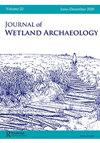Jomon Water Transportation of Obsidian and Volcanic Activity: Excavation and Analyses of the Yokoo Coastal Wetland Site, Japan
Q1 Arts and Humanities
引用次数: 0
Abstract
Abstract This paper reports on the investigation of Yokoo Site, a Jomon site, by the Oita Municipal Board of Education. Yokoo is located in Oita city on Kyushu Island in the western part of the Japanese archipelago. Japanese archaeologists have recognized Yokoo as a Jomon site with a shell mound since it was discovered at the beginning of the twentieth century. Yokoo is one of Japan’s most important sites for the history of archaeology. Until our investigation, the biggest part of the Yokoo site, which is the area without the shell mound, had been obscured and impossible to excavate. The purpose of the research described here was to investigate the structure and characteristics of Yokoo Site using various geo- and environmental archaeological methods. As a result, it was found that Yokoo Settlement was a relay station for the transportation of Himeshiman obsidian along a sea route during the Initial to Late Jomon period. Himeshima, an obsidian resource, was a mountain during the Jomon period, but due to marine transgression is now an island off the coast of the Kunisaki Peninsula. Himeshiman obsidian was transported across the Seto Islands Sea and the Inland Sea of Japan, which formed during the same period. Himeshiman obsidian is an important archaeological material and was transported across the Seto Islands Sea via a marine route in 7900–7300 cal BP. However, geoarchaeological research shows that on one occasion that transportation was interrupted by a natural disaster, the eruption of Kikai Caldera in 7300 cal BP. The Yokoo site shows not only human adaptation to the ongoing marine transgression but also remarkable evidence of an instantaneous human event during this, the greatest volcanic disaster since the formation of the Japanese Archipelago.绳纹时期黑曜石的水运与火山活动:日本Yokoo海岸湿地遗址的发掘与分析
摘要本文报道了大分市教育委员会对绳纹遗址——横尾遗址的调查。Yokoo位于日本群岛西部九州岛的大分市。日本考古学家在20世纪初发现了横尾,并将其认定为绳纹遗址。Yokoo是日本最重要的考古遗址之一。在我们调查之前,洋库遗址的大部分,也就是没有贝壳堆的区域,都被遮蔽了,无法挖掘。这里所描述的研究目的是利用各种地质和环境考古方法来调查Yokoo遗址的结构和特征。结果发现,横尾村是绳文初期到后期沿海路运输石满黑曜石的中转站。拥有黑曜石资源的Himeshima在绳纹时代是一座山,但由于海侵,现在是国崎半岛沿岸的一个岛屿。Himeshiman黑曜石是通过同一时期形成的濑户列岛海和日本内海运输过来的。Himeshiman黑曜石是一种重要的考古材料,在公元前7900-7300年通过海路穿越濑户群岛海。然而,地质考古研究表明,有一次交通被一场自然灾害打断,那就是公元前7300年的基凯火山口喷发。洋库遗址不仅展示了人类对持续的海洋海侵的适应,而且还提供了自日本群岛形成以来最严重的火山灾难期间人类瞬间事件的显著证据。
本文章由计算机程序翻译,如有差异,请以英文原文为准。
求助全文
约1分钟内获得全文
求助全文
来源期刊

Journal of Wetland Archaeology
Arts and Humanities-Archeology (arts and humanities)
CiteScore
1.40
自引率
0.00%
发文量
6
期刊介绍:
The Journal of Wetland Archaeology publishes a wide range of contributions in all fields of wetland archaeology. It includes scientific and methodological features, geoprospection, environmental reconstruction, wetland hydrology, cultural aspects of wetland archaeology, as well as conservation, site management, legislation, and site protection. All periods and all geographic regions are covered.
 求助内容:
求助内容: 应助结果提醒方式:
应助结果提醒方式:


